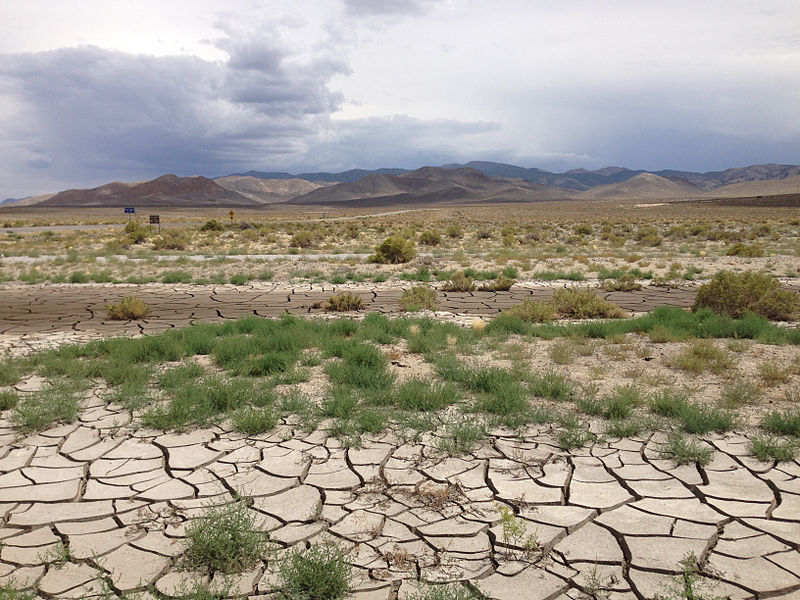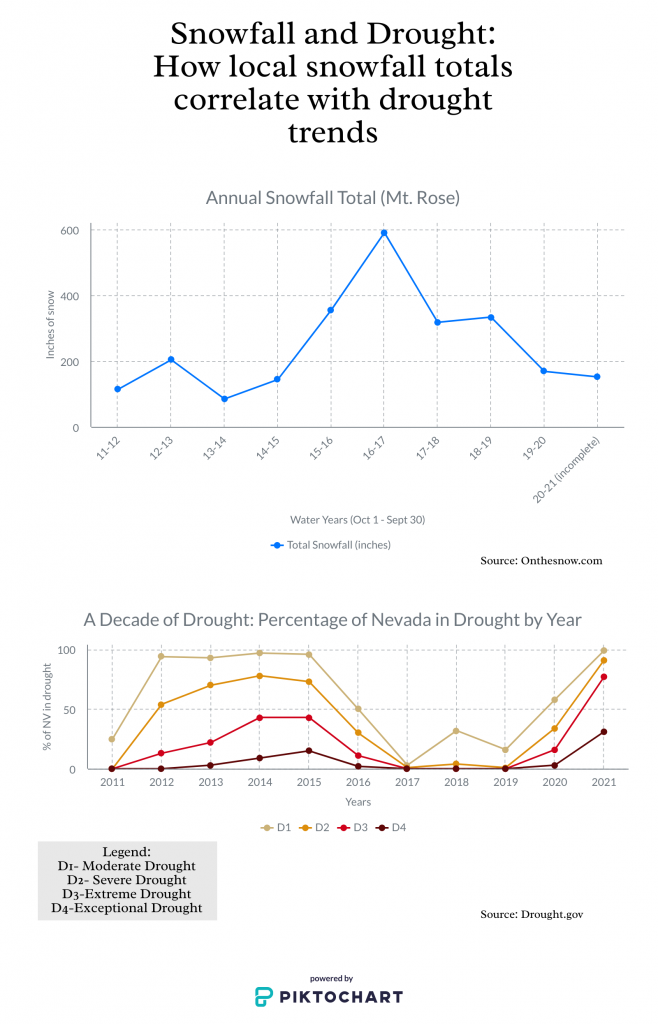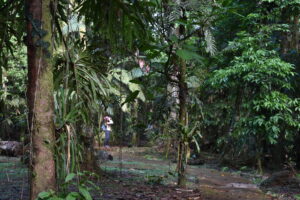
Nevada had its driest year on record in 2020 according to the National Center for Environmental Information, and recent trends point to it continuing to get drier. Currently all of Nevada is in drought, with over 72% of the state’s land experiencing “extreme drought conditions,” according to drought.gov. Desert Research Institute Assistant Research Professor and Climatologist Dan McEvoy says our conditions in the summer months are dependent on the precipitation our area gets in the winter.
“We’re now well into the second year of this drought,” McEvoy said. “This year we’re well below normal and last year was also well below normal. This includes a lack of snowpack in the mountains which is really one of our big water supplies.”
McEvoy’s comments reflect the numbers posted in the Nevada Water Supply Outlook Report, an extensive analysis of Nevada’s water supply conditions published by the United States Department of Agriculture. According to the March 1st report, the snowpack totals for Northern Nevada and the Eastern Sierra, which includes Carson, Tahoe, Walker Basins and Truckee, sit at 76% of the area’s average annual total. That’s far below what is considered a healthy snowfall year. McEvoy points to climate change and a rise in temperature as the biggest threat to the Nevada snowpack.
“Temperature is strongly increasing over the last 20 to 30 years, which is causing more precipitation to fall in the winter as rain instead of snow, which leads to less snow accumulation and to declining snowpacks overall,” McEvoy said. “Climate change and a rise in temperatures have cascading impacts on other aspects of drought.”
McEvoy says that this lack of precipitation leads to a decrease in both soil moisture and water levels in our reservoirs, two of the biggest issues that arise from drought.
Scientists like Kerri Ormerod, a geography professor at UNR who runs livingwithdrought.com, are concerned with how this year’s conditions relate to those of 2015, one of Nevada’s driest years on record.
“Our conditions are worsening and creeping into what we had in 2015, which was a terrible drought year,” Ormerod said. “We are in drought and that is true for 100% of Nevada. The extent of drought is further than 2015 but the length of time is not, so it’s a tough thing to call in that respect.”
Ormerod cannot project snowfall totals for the remainder of March and April, but says that there is a chance the snowpack could receive snow this spring that would bring it up to a healthy level.
Our current water storage
Although trends point towards worsening drought conditions across the state, Bill Hauck, the water supply coordinator for the Truckee Meadows Water Authority, says that people shouldn’t be concerned with our area lacking water come summertime.
“Although it appears all around us, that people are talking about drought, we’re seeing signs of drought because soil moisture levels are significantly below average,” Hauck said. “But as far as our community’s water supply, that’s still going to be adequate for the rest of the year and going into the following year.”
Hauck wanted to assure people that one or two straight years of dry conditions like the ones we are currently facing does not define our system’s water supply.
“We capture the runoff from a really big snowpack year and we hold and store the water and it’s released in years like this when the water levels aren’t naturally high enough to supplement river flows,” Hauck said.
Even though we seemingly have enough water for the near future, Ormerod details some of the effects of climate change and drought that our state is already experiencing.
The future of drought in Nevada
Ormerod says the effects of drought and climate change have impacted local species populations like sage grouse and mule deer, and rising temperatures have led to extreme heat that can be dangerous for certain groups in Nevada.

While it’s hard to prepare for drought’s effects on Nevada, Ormerod stresses that being able to report drought conditions across the state can help officials get people the resources they need.
“The better reporting we have and the more we know about what’s happening on the ground, the better we can prepare for drought and the better we can respond to drought,” Ormerod explained.
Ormerod expressed that fighting drought is a collaborative process. Reporting drought conditions across Nevada will help officials get the information they need to better understand and respond to drought.





